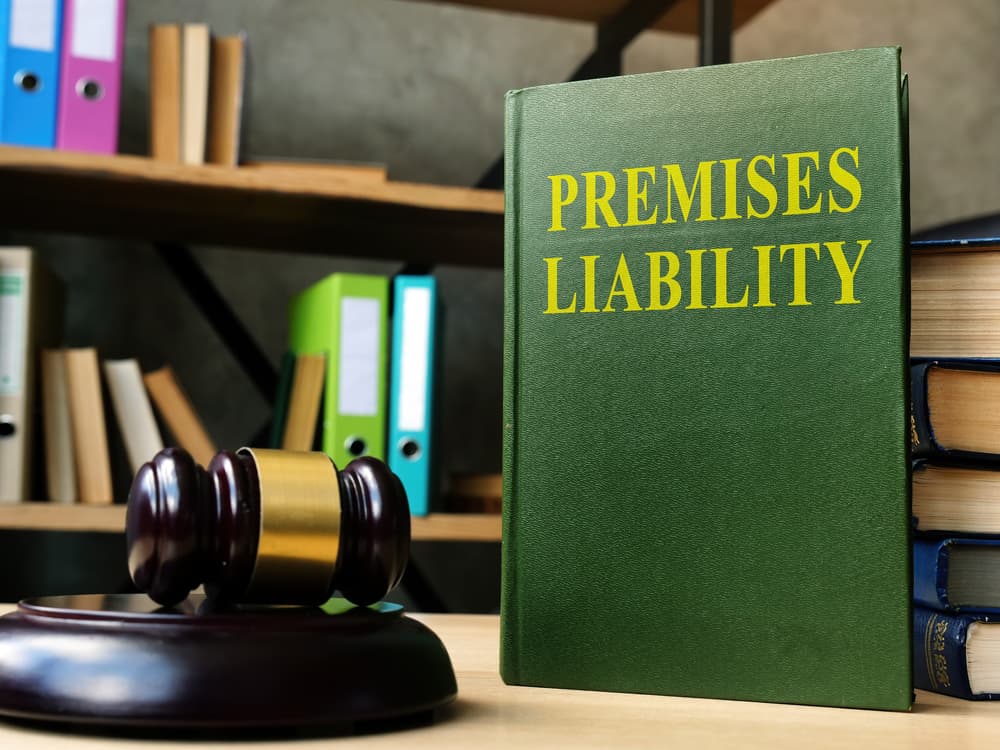
Helping You Obtain Compensation After a FedEx Truck Accident in New Port Richey, FL
FedEx is a major name in package delivery. The company generates around $70 billion in annual revenue, employs around 600,000 people, and delivers more than 18 million packages a day. On top of those impressive figures, many packages FedEx handles arrive at their destination by one of the more than 200,000 commercial vehicles that the company operates. These FedEx vehicles serve an essential purpose, but they also create hazards for other roadway users.
Accidents involving FedEx trucks can have devastating consequences. Due to the sheer size and weight of FedEx trucks, drivers and passengers of smaller motor vehicles can sustain serious injuries that require extensive medical treatment. You may have to miss work to recover from your physical injuries, and your medical bills and lost income can create financial hardships you shouldn’t have to endure alone.
If a FedEx truck driver caused an accident that injured you or someone you love, you may qualify to recover compensation through a personal injury claim, but the process is complex and challenging. FedEx accident claims are even more complicated due to the multiple parties involved and the state and federal regulations that may apply.
If you suffered injuries or lost a loved one in a FedEx truck accident in New Port Richey or the surrounding areas, you should consult a skilled New Port Richey truck accident lawyer for a free case review and advice on how to get the compensation you deserve.
Who Is FedEx?
Headquartered in Memphis, TN, Federal Express Corporation (FedEx) officially began its operations in 1973. In the corporation’s early years, it emerged as a leader in the push to deregulate air cargo, which allowed it to use larger aircraft to deliver more packages.
In the 1980s, it became the first company to reach $1 billion in revenue, and in 1984 it launched intercontinental operations in Europe and Asia. In the early 2000s, the behemoth acquired several trucking operations to enhance its delivery offerings.
According to the Federal Motor Carrier Safety Administration (FMCSA), the federal agency tasked with regulating the U.S. trucking industry, FedEx Corporation has had 786 violations in two years.
How Do FedEx Accidents Occur?
Like other types of delivery vehicles, FedEx delivery trucks are often oversized.
Large vehicles pose several hazards just by way of their size, including:
- Significant blind spots that prevent the driver from seeing whether a travel lane is clear.
- An increased distance needed for the brakes to pull the weight of the vehicle to a complete stop after the driver has perceived a hazard.
- A high center of gravity that can result in the truck overturning due to imbalanced cargo or attempting sharp corners too fast.
- Improper driver training covering how to maneuver the vehicle in adverse weather or traffic conditions.
- Improper maintenance of the vehicle that can result in blown tires, brake failures, or other accident hazards.
The FMCSA Safety Measurement System (SMS) reports the following service regulations violations involving FedEx delivery trucks:
Unsafe Driving
The types of unsafe driving practices that result in the FMCSA reporting a violation include:
- Failing to use caution for a hazardous condition, such as weather, smoke, or other hazards that can result in the truck losing traction or the driver’s visibility being impaired. In such situations, “using caution” generally means reducing one’s speed to a safe level for the conditions presented.
- Failing to use hazard warning flashers when stopped alongside the roadway to let other drivers in the area know to use caution when driving past the vehicle.
- Following too closely (tailgating), which presents a high risk of a rear-end accident due to the truck’s blind spot and the longer stopping distance it requires.
- Failure to obey a traffic control device, which includes activities such as running a red light or a stop sign, failing to obey portable or temporary signs, crossing a railroad when prohibited, or making an illegal U-turn.
- Driving while texting or other use of a handheld device when operating the vehicle, which FMCSA regulations prohibit for all drivers with a commercial driver’s license (CDL).
- Operating the truck while ill or fatigued.
- Failing to perform a pre-trip inspection to discover visible issues.
Hours of Service
The risk of driving a commercial motor vehicle while fatigued is extreme. The FMCSA reports that about 13 percent of all commercial accidents involved truck driver fatigue.
To prevent accidents resulting from fatigued truck drivers, the FMCSA instituted its Hours of Service requirements, which include:
- A driver can drive a maximum of 11 hours after ten consecutive hours of off-duty time.
- A driver can not drive after the 14th hour of on-duty time after ten consecutive hours of off-duty time.
- Drivers must take an off-duty break of 30 minutes after eight cumulative hours on-duty without at least a 30-minute interruption.
- Drivers cannot drive more than 60 hours in seven days or 70 hours in eight days.
Vehicle Maintenance Issues
FedEx trucks often haul thousands of pounds of cargo and travel many more miles in the average month than most other types of vehicles. Putting on all these miles while carrying heavy weight can cause parts of the car such as its tires and brakes to wear sooner than expected. FedEx, like other carriers, is required to perform regular maintenance on its trucks, and drivers must complete a pre-trip inspection before every trip.
Alcohol and Drug Impairment
The FMCSA requires holders of commercial driver’s licenses to submit to regular and random drug and alcohol screenings to obtain and maintain the CDL. Additionally, CDL-holders are subject to a reduced legal impairment limit for alcohol.
The impairment limit for most drivers over 21 in the U.S. is 0.08 grams of alcohol per deciliter of blood. However, CDL drivers must adhere to a different standard. A CDL driver is impaired if their blood alcohol content reaches 0.04.
Driver Fitness
In addition to drug screenings, CDL-holders (which include drivers of commercial trucks weighing over 10,000 pounds) must undergo regular physical examinations to ensure that they are medically fit to handle the rigors of the job.
If the medical examiner discovers the driver has a medical condition, they will determine whether the condition impacts their ability to drive. Even if the driver has a disqualification, it is only temporary until the driver can recover from the disqualifying condition or manage it through medication.
Seeking Compensation After a FedEx Accident
 If you suffered an injury in an accident caused by a FedEx driver, you could seek compensation through the personal injury claims process. This process often begins with your attorney determining liability and insurance resources, establishing a value to your claim, and sending a demand to the at-fault party’s insurance provider. The provider will then assign an insurance adjuster to the case. Next, the adjuster will evaluate the information, investigate the matter, and either:
If you suffered an injury in an accident caused by a FedEx driver, you could seek compensation through the personal injury claims process. This process often begins with your attorney determining liability and insurance resources, establishing a value to your claim, and sending a demand to the at-fault party’s insurance provider. The provider will then assign an insurance adjuster to the case. Next, the adjuster will evaluate the information, investigate the matter, and either:
- Accept the liability of their insured, and pay the demand;
- Deny the claim and provide the claimant with a reason for the denial; or
- Offer to settle the claim for less than its demanded value.
The quickest resolution to any lawsuit is when the adjuster pays the claim without argument. If they deny the claim, you and your attorney can file an appeal or take the case to court. If they offer a settlement, your attorney can negotiate with the adjuster to get them to increase their offer. If the adjuster fails to either pay the claim or make a fair offer, your claim can be filed in court as a lawsuit at any time before the statute of limitations runs out.
The statute of limitations is the time limit that lawmakers in your state have placed on your right to use the court system to seek compensation for the expenses and impacts of your injury. In Florida, for example, claimants generally have two years to file their lawsuit in court.
Who Is Liable: FedEx or Their Driver?
The cornerstone of your injury claim is the ability to prove that someone else was liable for the accident that caused your injury. If a FedEx driver caused the accident, you may hold them responsible.
However, you may hold the company itself liable because of:
- Vicarious liability, which involves a company’s liability for its employees’ negligent actions.
- The company’s failure to ensure that the driver received proper training or obtained the necessary licenses. Additionally, FedEx must maintain its trucks and adequately insure them. The FMCSA requires a higher level of insurance for commercial vehicles.
Some accidents involve multiple liable parties like other drivers whose actions contributed to the accident and even agencies tasked with maintaining the roadways. Your attorney will carefully investigate the details of your claim to determine all sources of liability and all available insurance resources that can provide your compensation.
The Compensation You Can Seek
Individuals filing a FedEx accident claim can seek compensation for their injury expenses (economic damages) and the psychological effects (non-economic damages).
Some costs that commonly appear on damage claims following a FedEx accident include:
- All medical expenses involved in treating the injury and its known complications. This includes expenses you already incurred and those you will likely face because of your injury.
- Lost income resulting from being too injured to work. You may also receive loss of earning capacity if your injury results in a permanent disability that impairs your ability to earn the same income as before the accident.
- Property damage the accident caused, such as damage to the vehicle you were driving.
- Physical pain and suffering, and emotional distress resulting from your injury.
How an Experienced Attorney Can Help You with Your FedEx Accident Claim
 The most important thing your attorney can provide is their experience with the legal process. Any claim involving a driver under FMCSA regulations is more complex due to the many applicable regulations. It takes time to inspect the documentation pertaining to these regulations and gather the evidence that proves your claim, but an attorney’s experience can ease the process.
The most important thing your attorney can provide is their experience with the legal process. Any claim involving a driver under FMCSA regulations is more complex due to the many applicable regulations. It takes time to inspect the documentation pertaining to these regulations and gather the evidence that proves your claim, but an attorney’s experience can ease the process.
Your attorney will:
- Determine liability and insurance coverage through supporting documentation, such as the accident report, and applicable insurance policies.
- Establish your case’s value using medical bills, repair estimates, replacement costs, and other relevant information.
- Manage communication with the at-fault party’s insurance provider to protect the value of your claim and negotiate a fair settlement.
- Calculate fair value compensation for your claim and other information to make the important decisions about your case.
- Gather evidence from the accident scene depose witnesses.
- Manage the deadlines in your case so you may use the civil court system to seek compensation.
- Litigate your claim by preparing evidence, delivering opening and closing arguments, presenting evidence, and examining witnesses.
- Collect your settlement or award.
Will My Case Go to Court?
About 96 percent of personal injury claims in the U.S. settle before they ever reach a courtroom. The settlement offer can occur anytime, even after court hearings have started.
There is no guarantee that your case will settle out of court either. Litigation may be necessary if the insurer fails to pay the claim or offer a fair settlement. An experienced truck accident attorney in New Port Richey can fight for your right to compensation, whether through negotiations or litigation.
Contact a New Port Richey FedEx Accident Attorney Today
 FedEx accidents are often serious, leaving victims with mounting medical bills and other personal and financial hardships. However, recovering compensation through truck accident claims requires the skills, resources, and knowledge or an experienced personal injury lawyer.
FedEx accidents are often serious, leaving victims with mounting medical bills and other personal and financial hardships. However, recovering compensation through truck accident claims requires the skills, resources, and knowledge or an experienced personal injury lawyer.
If a FedEx truck driver’s negligence caused a truck accident in New Port Richey that hurt you or a beloved family member, you should contact the Florida personal injury attorneys at Lucas, Macyszyn & Dyer Law Firm. We can review your case at no cost and help you determine your options for pursuing fair compensation.
Contact us today for a free consultation and let us help you and your family get the full and fair compensation you need and the justice you deserve.




